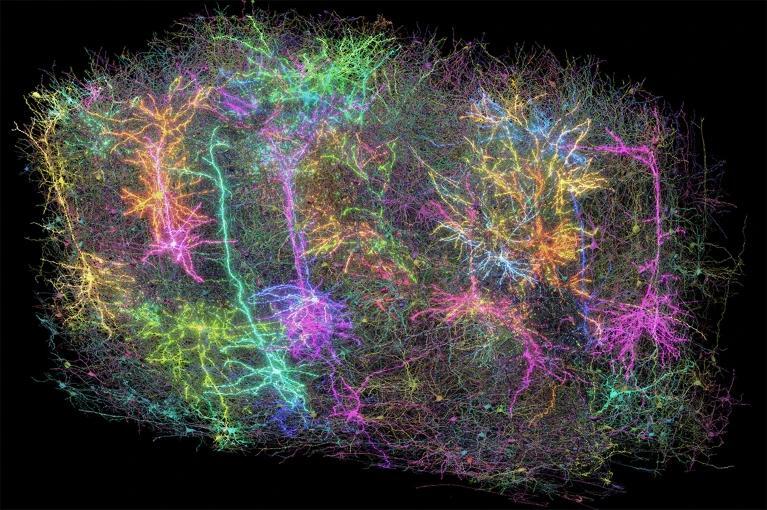
Scientists Create Biggest Brain Map Ever
In a groundbreaking achievement, scientists have created the largest map of a mammalian brain to date. This monumental feat has taken neuroscience to new heights, providing a deeper understanding of the intricate workings of the human brain. The brain map is so detailed that it looks like a galaxy, leaving many people in awe, while also sparking concerns about the potential implications of such a comprehensive understanding of the human brain.
The brain map was created by researchers who recorded the firing of almost 76,000 neurons in the visual cortex of a mouse as it watched videos, including clips from “The Matrix,” for two hours. The data collected was then used to create a 3D reconstruction of a cubic millimeter of brain tissue. AI and machine-learning algorithms were employed to annotate the neurons and their branching projections.
This incredible achievement is a testament to the advancements being made in the field of neuroscience. The brain map provides a level of detail that was previously unimaginable, allowing scientists to better understand how the brain processes information and how different brain regions communicate with each other.
The creation of this brain map is a significant step forward in the quest to understand the human brain. The brain is a complex and mysterious organ, and mapping its structure and function has long been a challenge for scientists. This achievement demonstrates the power of advanced technology and the potential for AI to aid in the quest for knowledge.
The brain map is not just a remarkable achievement; it also has the potential to revolutionize our understanding of neurological disorders. By mapping the brain in such detail, scientists may be able to better understand the underlying causes of conditions such as Alzheimer’s disease, Parkinson’s disease, and depression. This could lead to the development of more effective treatments and a better quality of life for those affected by these conditions.
The brain map is also raising concerns about the potential implications of such a comprehensive understanding of the human brain. With this level of detail, it may be possible to manipulate and control brain function, raising questions about the potential for mind control. This is a concern that has been raised before, particularly in the context of brain-computer interfaces and neurostimulation techniques.
However, the creation of this brain map is not about controlling or manipulating the brain; it is about understanding and improving our knowledge of the most complex organ in the human body. The potential benefits of this achievement far outweigh any concerns about manipulation or control.
The brain map is a remarkable achievement that has the potential to revolutionize our understanding of the human brain. It is a testament to the power of advanced technology and the potential for AI to aid in the quest for knowledge. While there may be concerns about the potential implications of this achievement, the benefits of this brain map far outweigh any concerns.
In conclusion, the creation of the largest brain map ever is a significant achievement that has the potential to revolutionize our understanding of the human brain. The brain map provides a level of detail that was previously unimaginable, allowing scientists to better understand how the brain processes information and how different brain regions communicate with each other. While there may be concerns about the potential implications of this achievement, the benefits of this brain map far outweigh any concerns.






